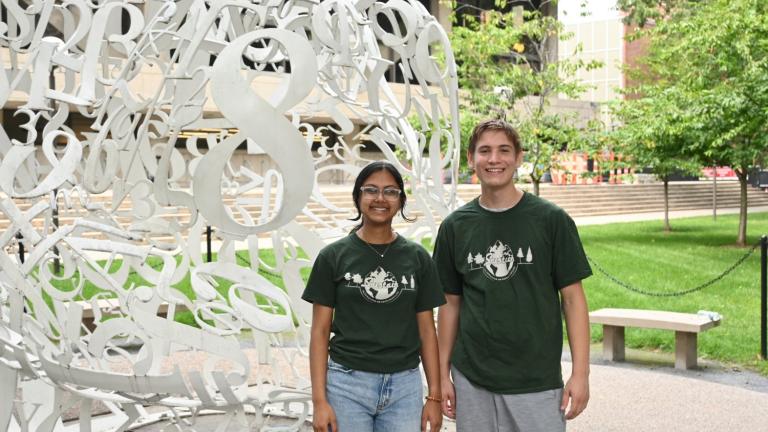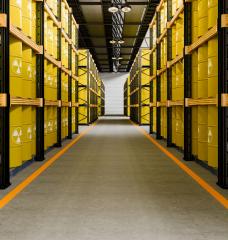
On an unusually cold day last February, pipes burst all over Massachusetts, including in the MIT Stratton Student Center (Building W20, affectionately called “The Stud” by students). There was widespread damage to the building, and despite many student group spaces being flooded with water, some still had salvageable items. At the time, the Undergraduate Association Sustainability team (UA Sustain) was called into action to see what items of furniture, computer equipment, and clothing could be saved and repurposed instead of being thrown into a landfill.
Cameron Dougal, a current UA Sustain co-chair, and Anushree Chaudhuri, a former co-chair, took time in the spring to lead the repurposing efforts of a plethora of items. Chaudhuri, from San Diego, California, and majoring in urban studies and planning and economics, and Dougal, from Springfield, Massachusetts, and majoring in urban science and planning with computer science, had little time to organize the student effort needed to clear out numerous club spaces.
Quickly, they took photos and inventoried a head-spinning list of usable items: 30 pieces of usable furniture, 20 large bags of club T-shirts, scuba gear, photography equipment (including darkroom chemicals), tables, beanbag chairs, computer monitors, keyboards, printers, electronic drum sets, guitars, pots and pans, microwave ovens, bookshelves, office supplies, clothing, theater and dance costumes, storage crates, magazine racks, bicycles, and items they referred to as “bad art.”
Groups clearing out their spaces found other treasures. Lecture Series Committee (LSC) members found a copy of a letter sent to Albert Einstein in 1950, inviting the renowned physicist to speak at MIT, as well as a reply from his assistant. “We found other interesting things, such as signed Star Trek posters and recordings of Winston Churchill Jr. [the former U.K. prime minister’s son] and T. S. Eliot,” says Heidi Durresi, LSC chair.
On a grand scale, though, the effort was daunting. “We found so much stuff, I asked my friends on the rowing team to help load the U-Haul truck we rented. We estimate we saved about 50 cubic meters and about 1,000 pounds, which doesn't include the 30-plus pieces of furniture, from going into a landfill. It was hard to decide what to save and what to get rid of, but through our Trash2Treasure program, we’ll sell many of the items we found. Any money we make cycles back into the UA Sustain Reuse budget or is donated to charity,” says Dougal.
Chaudhuri noted that they had just a week and a half to clean out the floor in concert with staff from Student Organizations, Leadership, and Engagement and the Campus Activities Complex. But, because UA Sustain has extensive experience managing the logistics of similar projects, she knew that this was a way her committee could help. “It was like going through the layered sediments of club history at MIT. We just kept finding more and more things. Our main goal was to keep as much as possible out of landfills,” she says.
Once Chaudhuri and Dougal had everything usable out of W20, they began the outreach part of their plan. They emailed dorms and fraternities, sororities, and independent living groups about taking the furniture. Unclaimed items were donated to the MIT Furniture Exchange. They worked with MIT Recycling to move items to their storage space — to be sold (for reasonable prices) at the Trash2Treasure sale this fall. Clothing items deemed unsuitable for sale were bagged and sent to a textile recycling facility. Anything remaining was donated to local area thrift stores — all in an effort to keep items out of landfills.
“We really couldn’t have done it without the help of the other club teams. So, a shout-out to them! They put in a lot of overtime on this project,” says Chaudhuri. “We also had the help of administration from the Student Organizations, Leadership and Engagement office.”
“We hope this effort opens people’s eyes as to what can be reused. We hope the MIT community will remember that things don’t have to be thrown away. We’d love to see everyone form greener habits,” says Dougal.
Chaudhuri is currently applying to master's of city planning programs and Dougal also plans to pursue a master’s of city planning — when they graduate in 2024 and 2025, respectively. In the meantime, they will continue looking for sustainability projects with the UA and spreading awareness about the great work they do.






